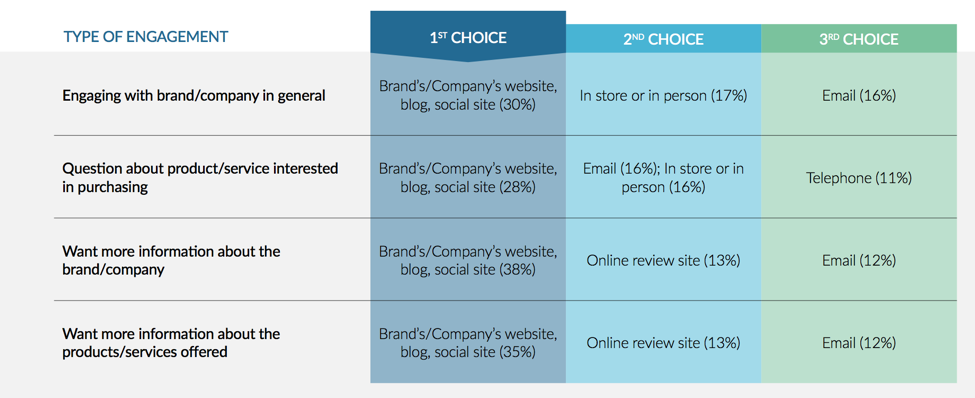You may have just blinked. In that brief moment of time, there were likely a dozen changes that hit the world of social media, causing you to change – in big ways or small – how you go about your day-to-day. And because you wade in the social media waters every day, you know just how quickly the rules of engagement can change. It can be really hard to stay afloat. After all, the only constant in the world of social media is constant change.
Let’s think back a few years – you know, when social media was the bright, new, shiny object in the room. It was a time when people felt encouraged, even somewhat empowered by the sheer connectivity of social media. All we had were telephone numbers, email addresses, and instant messenger screen names to stay in touch with each other. Within a matter of a few short years, the entire world became part of one, big social media Rolodex.
Not only would this soon fundamentally change the way people stayed in touch with each other, but it would also open people’s minds to new kinds of sharing. In fact, in the earliest years of social media, because it was such a novelty, people felt quite compelled to share every minute detail of their daily lives – from their most random of thoughts to the painfully simple and mundane (like checking in everywhere). The world of social media rapidly became everyone’s proverbial oyster. There were no rules, per se. Everyone was experimenting at the same time. And the most unique thing that happened out of all of this was the rise of “public communities” – a mix of friends, family, and colleagues you already knew in real life, acquaintances you’d lost touch with over the years, as well as new people who you only really “knew” in the digital world, but ultimately rallied around your similar ideas and interests – which now, based on today’s social media lexicon, are simply our “friends.”
Why am I even bothering walking down memory lane? It’s actually not for the sake of conjuring up any memories (good or bad). It’s a simple reminder of just how much social media has evolved in such a short amount of time. For those of you who have ridden this wave from the very beginning, you know there are no truer words. The truth is, social media has evolved in ways that many of us couldn’t have ever imagined or even predicted as little as one to two years ago. What was once all about sharing fleeting moments in our personal lives, has quickly turned into a non-stop, mediatized experience that, more often than not, feels like a deluge of content and promotions. What was once a “safe haven” of mindless sharing has now, like all things related to the media we love most, become overwhelmingly commoditized.
This has obviously been a great thing for brands. For consumers, though, the jury is still out. The rapid rise of digital, which now touches practically every part of our day-to-day lives, has made information immediate – and immediately accessible. News travels fast. The world as we once knew it is no longer big and mysterious; it’s small and scarily interconnected. Nothing is secret anymore. It’s all out in the open. Anyone can take part in virtually any conversation.
For any social media practitioners, this means you are essentially on the front lines every single day. You have nowhere to hide, either. Consumers, now trained to expect instant gratification from brands, are flocking first to social media in growing numbers – roughly one-third – as a first line of defense to do research, find information, or get help. And they’ll do this before ever picking up the phone. Why? As the digital ecosystem around us has evolved and matured, both brands and consumers have matured alongside.
The Path To Happy Customers
On one hand, brands have harnessed the power of digital to create more cohesive and immersive brand experiences across multiple media – as well as offline – channels. Part of this includes making more essential information accessible on those channels for consumers to find on their own. On the other hand, in seeing brands continually step up their game in digital, consumers have now grown to expect nothing less than simple, streamlined, and stellar digital customer experiences. When they need information or are looking to get help, they expect brands to make it all easily accessible via digital.
Digital customer experience is the new playing field. The brands that make the necessary investments to compete on the digital customer experience front only stand to win. In fact, those that do – by investing in the right people, platforms, processes, and organizational structures – have been shown to outperform those that don’t. This is being driven by the fact that 68 percent of C-suite executives expect to place a greater focus on digital customer experience over product development in the coming years. In fact, 86 percent of business leaders (beyond the C-suite) agree that customer experience is vital and will be vital for a brand’s future success. So, what this basically means for people who live and breathe social media every day is that your jobs are going to get exponentially more challenging with each passing day.
Study Finds Investments In Customer Experience Are Paying Off
Whether you curate and manage social media channels or are a “first responder” as part of a brand’s social media customer care efforts, you are on the front lines – and will be responsible for setting the tone of your brand’s digital customer experience.
Not to put the pressure on, but you play a pretty important role in the overall success of your brand. That’s why it’s so important to have a few essential pieces in place to ensure that your entire team can deliver a cohesive digital customer experience at all times.
-
“Listen” to Customer Needs
As I mentioned before, today’s consumers want – no, they expect – instant gratification. If your role is to simply “respond” to inquiries and issues as they arise, you’re already a few steps behind. Your customers expect you to always be a few steps ahead. They come to you for help. Their expectation is that you will go above and beyond to ensure their happiness. But you can’t do that (effectively) if you’re always in reactionary mode. It’s time to shift gears and really anticipate customer needs like never before. Fortunately, there are some pretty powerful social listening tools available that provide real-time insight into what your customers need you for most. This is especially helpful in times of crisis. Just because a potential social media meltdown is brewing doesn’t mean you can just put other customer queries on the back burner until everything simmers down. You have to juggle both. Keeping tabs on what people say about your brand can give you a major leg up, helping to deliver a better experience for customers from the very start.
-
Build a Customer-Centric Social Care Team
This goes hand-in-hand with the above. As your brands grow, you’ll have more customers; and as you acquire new customers, you’ll need more people on-hand to help them. Your social customer care efforts need to scale as your brand grows. This could be in the form of more employees and/or better technologies and platforms to help your team be more efficient. At the heart of all of this are customers: their wants, their needs, and their expectations. Your social customer care team needs to deliver on all of that – and be able to go one step further, of course, all in real-time. Long gone are the days when consumers accept waiting hours to receive a response. The brands that win at digital customer engagement are those that can respond to customers in a matter of minutes across all channels (i.e. whichever channels your specific customers use most to contact you). This is underscored even further knowing that 30 percent of consumers won’t think twice about giving your nearest competitor a go if you fail to respond.
-
Stay Relentlessly Consistent
This might seem obvious, but it’s a part of the digital customer experience equation that surprisingly gets overlooked more than you’d expect. Doesn’t matter who the agent is, any response to a customer inquiry is a response from the brand you represent. You need to make sure that both branding and messaging is consistent in all responses with all Period. One superstar agent does not a stellar customer experience make. (Although we love our superstar agents!) Whenever a customer reaches out, they should have the same brand experience every time. Not only does this help manage expectations over time, but it also is a great way to build customer advocacy for your brand. When customers need information or help, they don’t want unexpected surprises. They want answers. Give it to them consistently.
-
Create Self-Service Communities
Remember what I said earlier about information now being immediate and immediately accessible? Brands play a big part in addressing this, too. The biggest reason why customers flock to social media or, as a last resort, pick up the phone for help is because they can’t find the answers they need anywhere else. Creating an online, peer-to-peer community, curated in part by your super users, is a great way to help customers troubleshoot on their own. Not only is this another great brand experience touch point for customers to tap into – in other words, a logical extension of your digital customer engagement efforts – but it’s also a perfect way to enable and empower customers to take the reigns of customer service on their own terms. Because, again, why go back and forth with customer service when you can find the information you need on your own? It’s really a no-brainer. That’s why online communities are such a valuable resource for brands. They help divert traffic from customer care teams while creating a new opportunity for customers to engage with brands and their biggest advocates.
Social media has changed a lot over the years. It’s going to keep on changing – and all of us who touch it are going to have to keep on adapting to those changes as they come. But doing so will make it a lot easier for you to consistently deliver stellar digital customer experiences at every step along the customer journey. At the end of the day, it’s all about convenience and care. Be there when your customers need you most, and they’ll stick around with you for a lifetime!

Eddie McGraw
Senior Director of Marketing & Communications, Lithium
Eddie McGraw is the senior director of marketing & communications at Lithium. In this role, he oversees media relations, analyst/influencer relations, executive communications, customer marketing, social media, and generally spends his time figuring out what Lithium’s story is for various audiences.
Meet the Lithium team at Social Media Strategies Summit, Chicago April 24-26th. Make sure you subscribe to our weekly newsletter and don’t miss our latest and greatest content every week!












